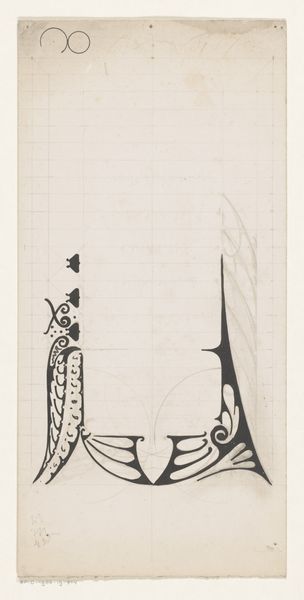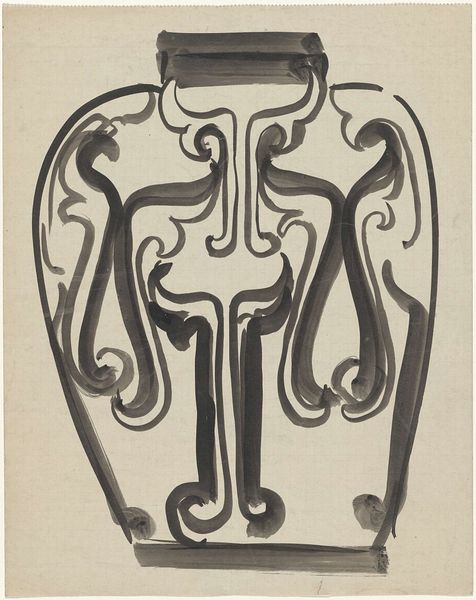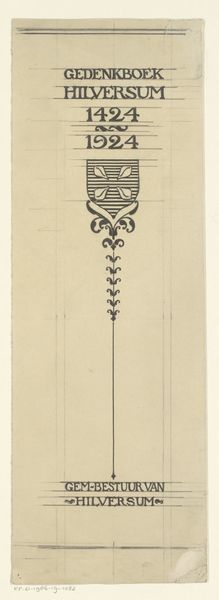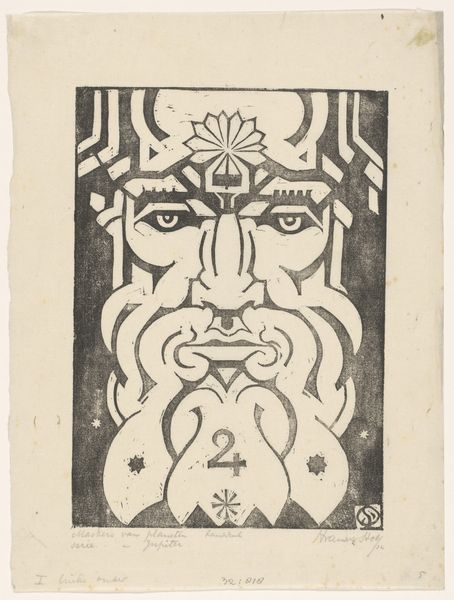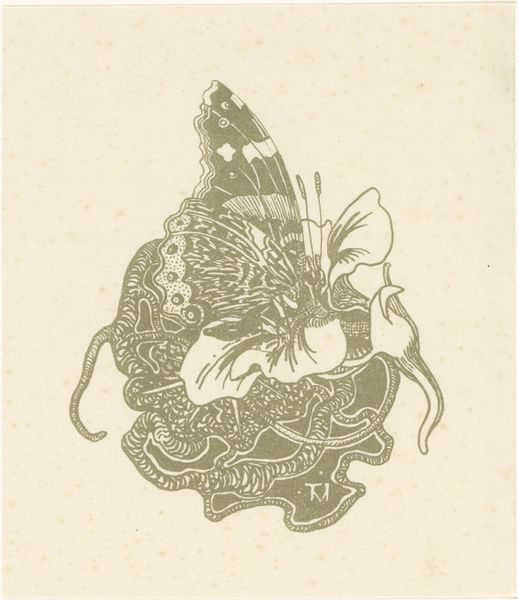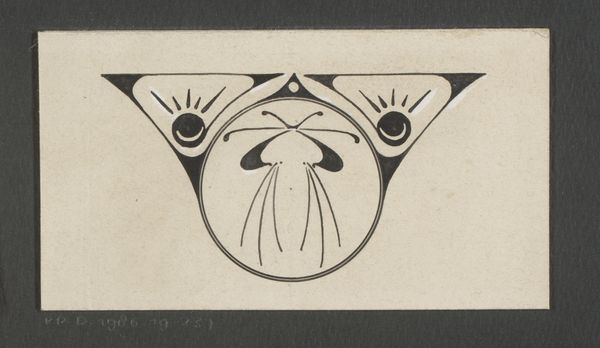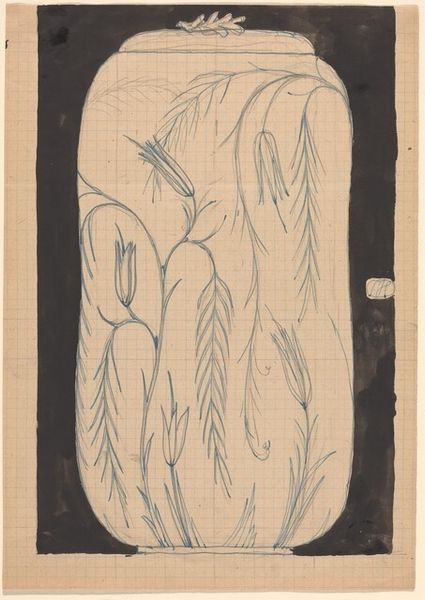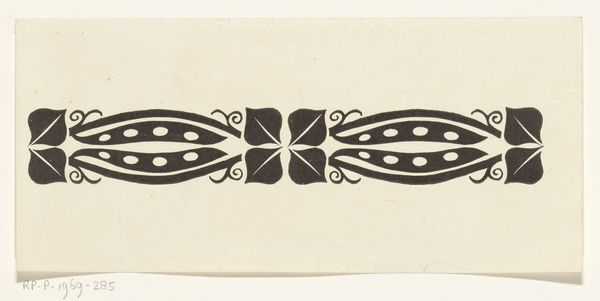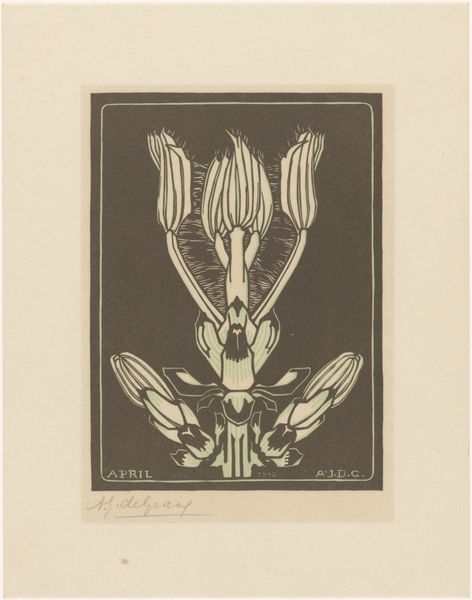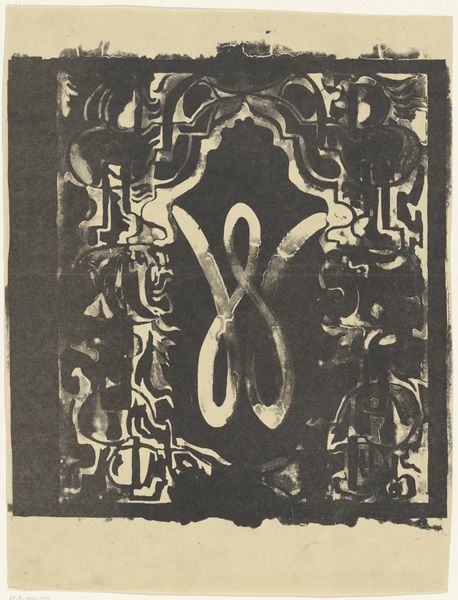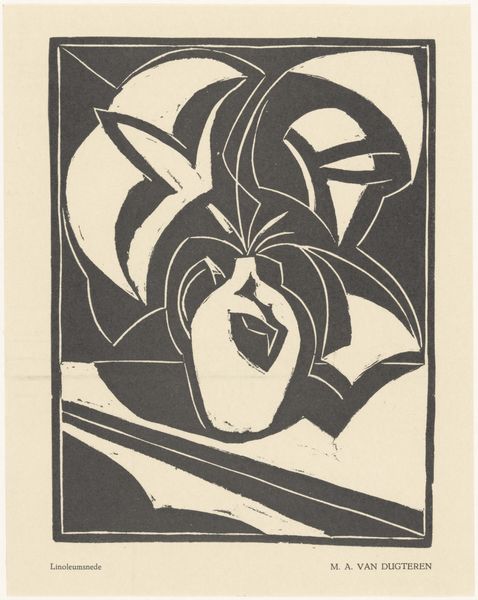
graphic-art, ornament
#
graphic-art
#
ornament
#
art-nouveau
#
geometric
#
line
#
decorative-art
Dimensions: height 123 mm, width 89 mm
Copyright: Rijks Museum: Open Domain
Curator: Here we have "Ornament," a graphic artwork from the early 20th century, dating roughly from 1904 to 1919 and signed anonymously. Editor: Striking! It's severe but ornate; the hard lines contrast with floral motifs. The balance creates a sense of contained energy. Curator: Precisely, the use of line, so characteristic of Art Nouveau, channels its decorative impulse, a conscious manipulation of organic and geometric forms. Consider the cultural landscape of the time; this could have been intended for anything from textiles to architectural embellishments, demonstrating an aspiration to aestheticize everyday life. Editor: The stylized flowers—are they roses?—they almost look like watchful eyes. Their symmetry invokes classical heraldry, echoing emblems of power, tradition. Given the date, what upheavals, anxieties do those echoes betray? Curator: It makes one consider the labour involved: the precision of execution hints at meticulous craft production, contrasting sharply with the rise of industrialization. How accessible would these ornamental pieces have been? Was this a symbol of wealth? The social context informs everything. Editor: The central spine, it’s reminiscent of gothic architecture, particularly pointed arches evoking both upward aspiration and… defence. Considering its cultural memory, what meanings might it evoke about institutions like the church? Or conversely about rebellion? Curator: Both valid considerations. It makes me consider what effect mass production had on artisanal methods. To whom did art belong, and who decided what constituted "art"? I wonder, could you see signs of standardization to cut down on cost? Editor: Absolutely, there’s a story there about material availability, changing cultural values… yet ultimately, these stylized blossoms convey emotional resonance. Ornament as an enduring expression of desire and yearning. Curator: An astute assessment! Reflecting on it, I see a narrative interwoven with social, industrial shifts of the time. A small piece, a rich dialogue, both materially and symbolically. Editor: Agreed. Something profound is woven through even the most decorative surface; meaning persists in being transmitted via our perception and memory of those familiar signs.
Comments
No comments
Be the first to comment and join the conversation on the ultimate creative platform.
